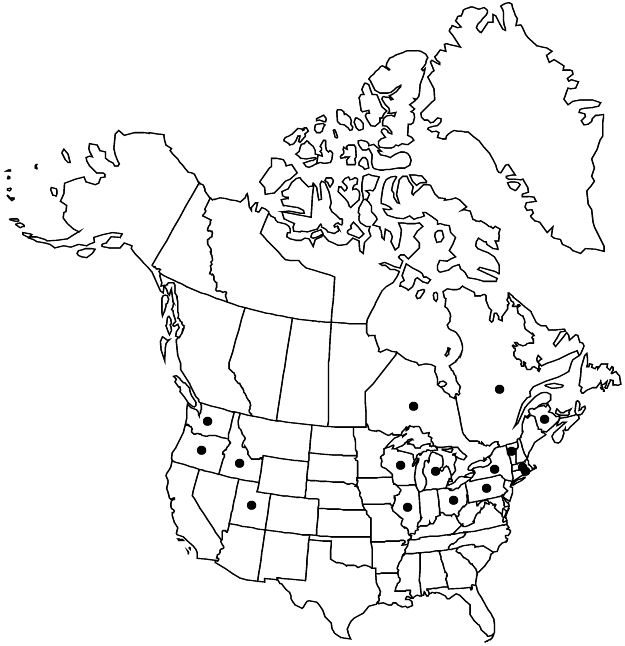Geum urbanum
Sp. Pl. 1: 501. 1753.
Plants leafy-stemmed. Stems 25–85 cm, puberulent and sparsely hirsute. Leaves: basal 12–25 cm, blade strongly lyrate-pinnate to pinnate, major leaflets 1–9, sometimes alternating with minor ones, terminal leaflet slightly to much larger than major laterals; cauline 4–15 cm, stipules ± free, 10–40 × 5–35 mm, blade pinnate, 3-foliolate, or simple and 3-lobed. Inflorescences 3–18-flowered. Pedicels puberulent, less densely hirsute, eglandular. Flowers erect; epicalyx bractlets 0.5–2 mm; hypanthium green; sepals spreading but soon reflexed, 2–5 mm; petals spreading, yellow, suborbiculate, elliptic, or obovate, 2–6 mm, shorter to longer than sepals, apex rounded. Fruiting tori sessile, densely bristly, hairs 1–2.3 mm. Fruiting styles geniculate-jointed, proximal segment persistent, 3–7 mm, apex hooked, glabrous, distal segment deciduous, 1–1.5 mm, glabrous or with short hairs, hairs shorter than diam. of style. 2n = 42.
Phenology: Flowering summer.
Habitat: Waste places, hedgerows, gardens, edge of sidewalks, disturbed woods, along roads and trails in mesic woods
Elevation: 0–1400 m
Distribution

Introduced; N.B., Ont., Que., Idaho, Ill., Mass., Mich., N.Y., Ohio, Oreg., Pa., R.I., Utah, Vt., Wash., Wis., Eurasia, n Africa
Discussion
Specimens from Chicago, Illinois, and Cambridge, Massachusetts, indicate that Geum urbanum has been present in North America for at least 100 years; herbarium specimens are scarce. The species seems to be spreading in ruderal habitats of the northeastern United States and adjacent Canada. The plants have the habit and foliage of G. canadense and G. virginianum, with stipules as large as or even larger than those of the latter; the petals are bright yellow versus white or cream, and the distal segments of the styles are glabrous or nearly so versus partially pilose.
Geum urbanum is often found growing near G. canadense, and the two occasionally form hybrids; G. ×catlingii J.-P. Bernard & R. Gauthier is known from New Brunswick, Ontario, Quebec, and Michigan. Less common is G. ×macneillii J.-P. Bernard & R. Gauthier [G. laciniatum × G. urbanum], known from Quebec. Both hybrids closely resemble G. urbanum in vegetative form, with little hint of their other parent; it is likely that hybrid plants often go undetected. Most herbarium specimens of these hybrids were collected along with their parental species at the same locality. The hybrids are often robust, apparently showing hybrid vigor. Unlike G. urbanum, they have cream petals and heads with mostly sterile ovaries.
Selected References
None.
Lower Taxa
"thin" is not a number."elongating" is not a number. "elongating" is not a number.